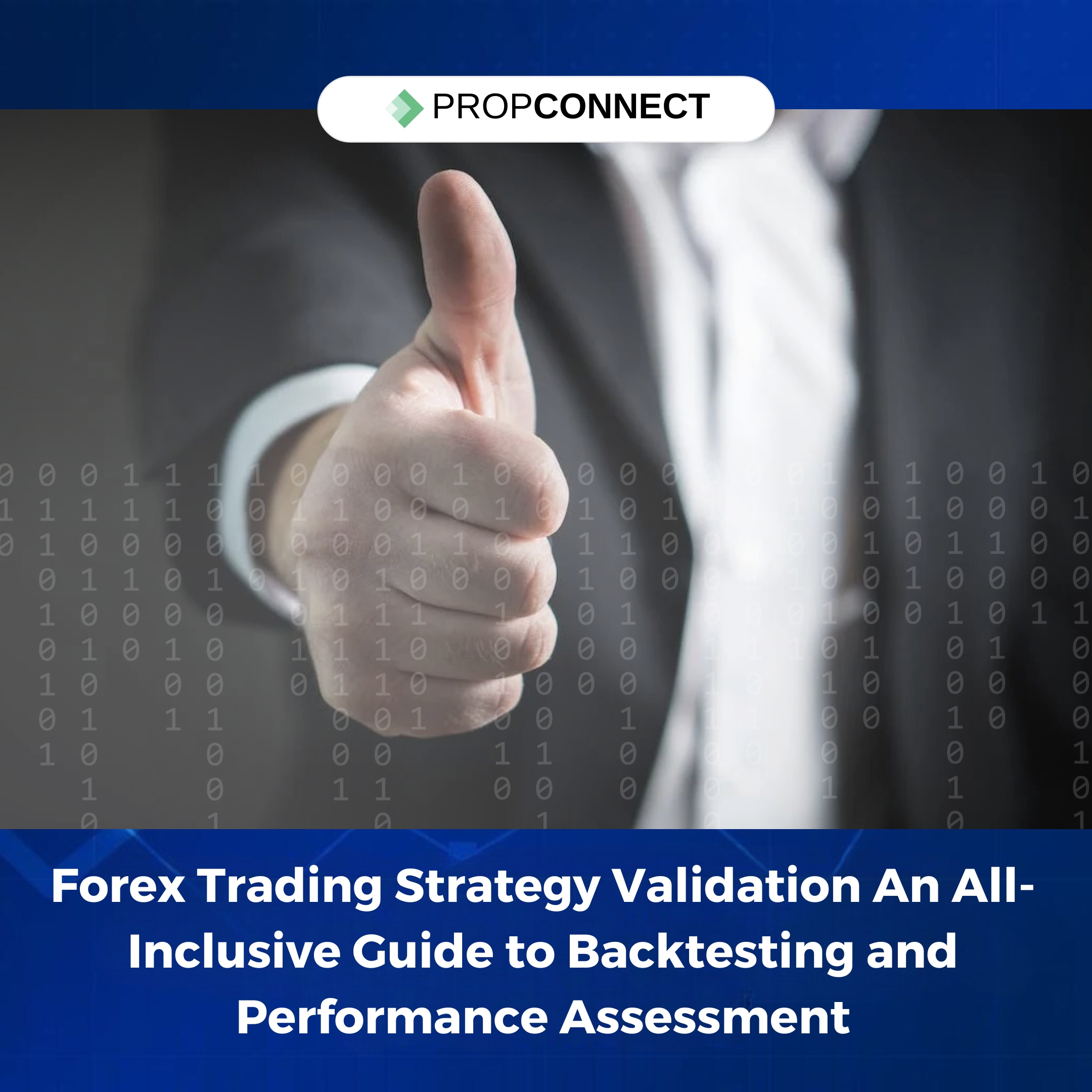Articles
Forex Trading Strategy Validation An All-Inclusive Guide to Backtesting and Performance Assessment
It is a laborious but necessary procedure to validate forex trading methods via backtesting and performance reviews. Traders who use these techniques consistently boost their chances of long-term performance, get a thorough grasp of their tactics, and pinpoint opportunities for improvement.

The success of forex trading is a dynamic endeavor that depends on the efficacy of the techniques utilized. Traders utilize diverse methodologies to navigate the intricacies of the foreign exchange market, and it is crucial to authenticate their approaches. We explore the key components of performance evaluation and backtesting in this extensive article, which are vital instruments for guaranteeing the accuracy and profitability of forex trading systems.
Knowing about backtesting
Backtesting is the process of simulating a trading strategy in the past and assessing its success with historical market data. It enables traders to evaluate the performance of a strategy in a specific historical setting. Finding the strategy's advantages and disadvantages, fine-tuning its parameters, and estimating its possible efficacy in the present and future market conditions are its main goals.
Data Selection: Start by choosing a representative and pertinent historical dataset. When assessing the flexibility of a strategy, make sure the data covers a range of market conditions.
Platform Selection: Select a dependable backtesting platform that fits the instrument preferences and complexity of the strategy. MetaTrader, TradingView, and specialized algorithmic trading platforms are examples of well-known platforms.
Putting the Plan into Practice: Write the trading plan in code or enter it into the selected platform.
Clearly state access and exit spots, guidelines for risk management, and any other pertinent information.
Backtest Execution: Use historical data for the backtest to enable the platform to simulate trades using the selected strategy.
Examine the outcomes, taking into account the win percentage, drawdown, and profit/loss.
Assessment of Performance:
Although backtesting yields insightful data, performance assessment extends beyond past simulations. It involves closely monitoring the plan in real time or through a demo account, considering various factors that contribute to long-term success.
Risk-Adjusted Returns: Evaluate the returns of the strategy in relation to the associated risks.
Metrics that account for risk, such as the Sharpe ratio, are useful in determining how efficient returns are in proportion to volatility.
Win Rate vs. Risk-Reward Ratio: It's important to maintain equilibrium between each of them. A negative risk-reward ratio could compromise a strong win rate.
Drawdown Analysis: Assess the strategy's drawdowns, or the intervals of time between a profit and a loss.
Effectively control drawdowns to protect capital in volatile markets.
Robustness and Consistency: A robust strategy works effectively in a range of market circumstances. Ensure that the strategy is solid and continues to work in many situations.
Common Mistakes in Performance Evaluation and Backtesting:
Over-Optimization: Steer clear of overfitting the approach to past data, as this could lead to poor real-time performance.
Strive for a balance that encapsulates the strategy's main ideas without being overly dependent on past events.
Ignoring Transaction Costs: To simulate actual trading situations, backtesting should take transaction costs into account.
Overestimation of profits can result from ignoring transaction costs.
Ignoring Slippage can distort performance evaluation results if it does not take into account the discrepancy between the predicted and actual execution prices.
Failing to Adjust: Regularly reviewing and updating strategies in light of shifting market dynamics is crucial. Markets change, and strategies should adjust with them.
Continuous Improvement and Adaptation:
Forex trading is dynamic, and traders who are successful recognize this and strive for constant improvement, review and improve trading tactics on a regular basis in light of changing market conditions and performance assessments their strategy to do that is the following:
Acknowledging Mistakes: Examine unsuccessful trades and drawdowns in order to gain knowledge from them.
Recognize trends or situations that result in inadequate results.
Market Awareness: Keep up with developments in the world economy and market patterns.
Modify tactics in light of technical and fundamental analysis.
Take into Account New Information: Macroeconomic variables, geopolitical developments, and central bank policies. Assimilate new information and adjust to shifting market condition
In conclusion, it is a laborious but necessary procedure to validate forex trading methods via backtesting and performance reviews. Traders who use these techniques consistently boost their chances of long-term performance, get a thorough grasp of their tactics, and pinpoint opportunities for improvement. Because the forex market is dynamic, it calls for flexibility, ongoing education, and a dedication to fine-tuning techniques in response to changing circumstances. The intricacies of forex trading can be expertly navigated by traders by fusing historical analysis with real-time performance reviews.

